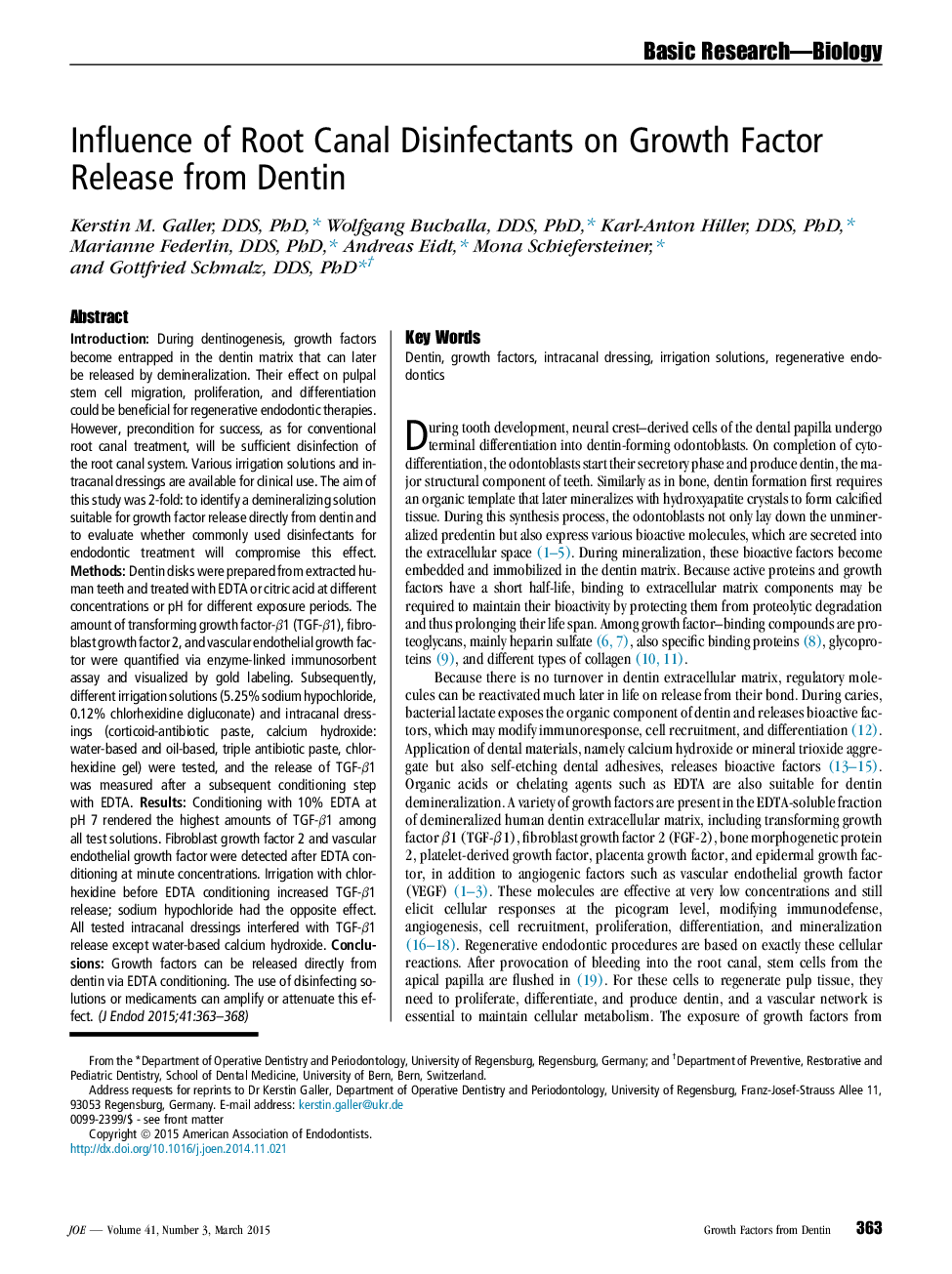| Article ID | Journal | Published Year | Pages | File Type |
|---|---|---|---|---|
| 3148312 | Journal of Endodontics | 2015 | 6 Pages |
•The release and quantification of growth factors from the surface of human dentin after demineralization is possible.•Commonly used irrigation solutions and intracanal medicaments interfere with subsequent growth factor release.•The release of growth factors from human dentin might become more important for regenerative endodontic treatment.
IntroductionDuring dentinogenesis, growth factors become entrapped in the dentin matrix that can later be released by demineralization. Their effect on pulpal stem cell migration, proliferation, and differentiation could be beneficial for regenerative endodontic therapies. However, precondition for success, as for conventional root canal treatment, will be sufficient disinfection of the root canal system. Various irrigation solutions and intracanal dressings are available for clinical use. The aim of this study was 2-fold: to identify a demineralizing solution suitable for growth factor release directly from dentin and to evaluate whether commonly used disinfectants for endodontic treatment will compromise this effect.MethodsDentin disks were prepared from extracted human teeth and treated with EDTA or citric acid at different concentrations or pH for different exposure periods. The amount of transforming growth factor-β1 (TGF-β1), fibroblast growth factor 2, and vascular endothelial growth factor were quantified via enzyme-linked immunosorbent assay and visualized by gold labeling. Subsequently, different irrigation solutions (5.25% sodium hypochloride, 0.12% chlorhexidine digluconate) and intracanal dressings (corticoid-antibiotic paste, calcium hydroxide: water-based and oil-based, triple antibiotic paste, chlorhexidine gel) were tested, and the release of TGF-β1 was measured after a subsequent conditioning step with EDTA.ResultsConditioning with 10% EDTA at pH 7 rendered the highest amounts of TGF-β1 among all test solutions. Fibroblast growth factor 2 and vascular endothelial growth factor were detected after EDTA conditioning at minute concentrations. Irrigation with chlorhexidine before EDTA conditioning increased TGF-β1 release; sodium hypochloride had the opposite effect. All tested intracanal dressings interfered with TGF-β1 release except water-based calcium hydroxide.ConclusionsGrowth factors can be released directly from dentin via EDTA conditioning. The use of disinfecting solutions or medicaments can amplify or attenuate this effect.
